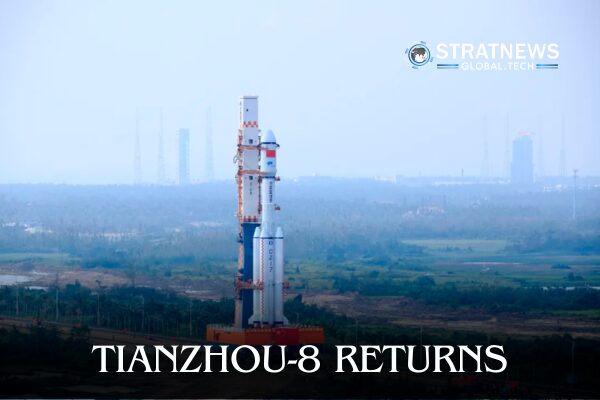Tianzhou-8 Cargo Craft Separates from China’s Space Station
The Tianzhou-8 cargo craft, which carried essential supplies for China’s space station, has successfully separated from the station combination, the China Manned Space Agency (CMSA) confirmed on Tuesday.
Controlled Re-entry Planned
The CMSA stated that Tianzhou-8 will re-enter the atmosphere in a controlled manner. Most of the craft’s components will burn up during re-entry, with a small amount of debris expected to fall into a designated safe sea area.
The cargo craft launched on 15 November 2024 at 23:13 Beijing Time (15:13 GMT) from the Wenchang Spacecraft Launch Site in Hainan province, using a Long March-7 Y9 carrier rocket. About three hours later, it docked with Tianhe, the core module of the Tiangong space station.
Supporting Astronaut Missions and Research
Astronaut Cai Xuzhe entered Tianzhou-8 on 16 November at 08:26 Beijing Time (0026 GMT) after opening the hatch. The cargo craft carried around six tons of materials, including consumables for astronauts, propellants, experiment equipment, and 458 kilograms of scientific research supplies to support their in-orbit work.
Jin Xuena, a researcher at the Technology and Engineering Center for Space Utilisation under the Chinese Academy of Sciences, explained that Tianzhou-8’s mission supported experiments in space life sciences, biotechnology, materials science, microgravity fluid physics, and combustion. The mission also enabled the testing of new space application technologies, facilitating a total of 36 scientific experiments aboard the station.
Testing Lunar Construction Materials
For the first time, the mission included a brick made from synthetic lunar soil, which was brought to the station for an exposure experiment. This brick underwent tests to determine its mechanical, thermal, and radiation resistance properties in space, providing valuable data for future moon construction plans.
The Tianzhou-8 mission demonstrates China’s continued progress in advancing its space station operations while supporting scientific research critical for future lunar and deep space missions.
with inputs from Reuters


